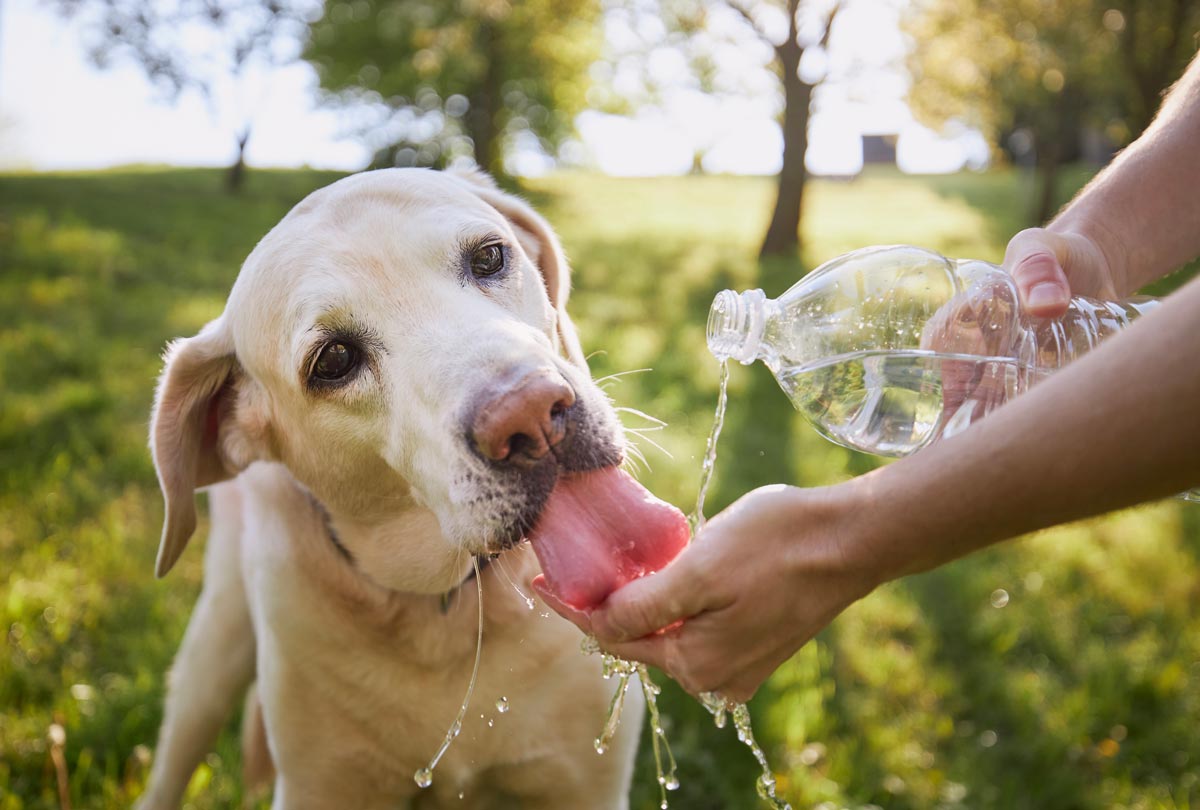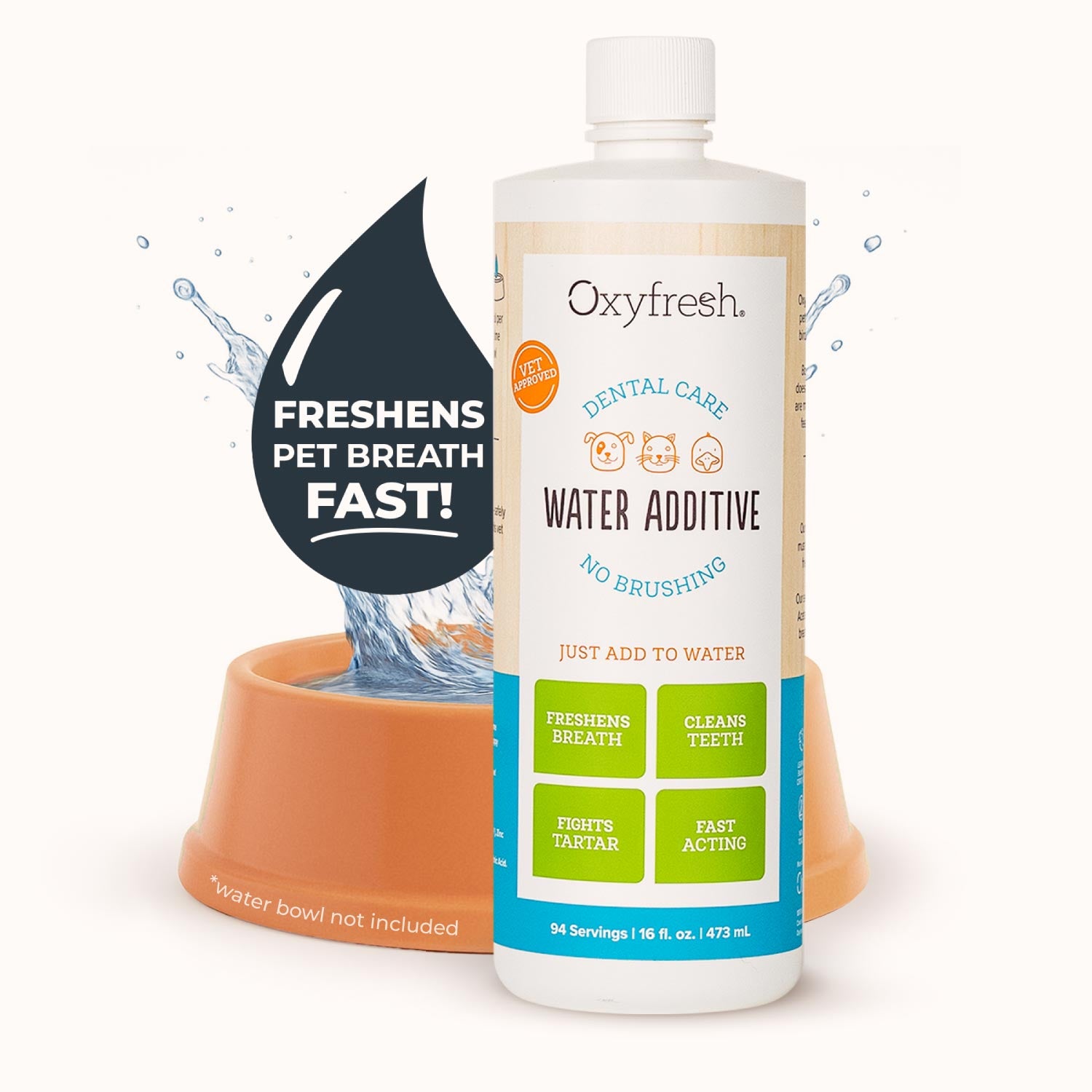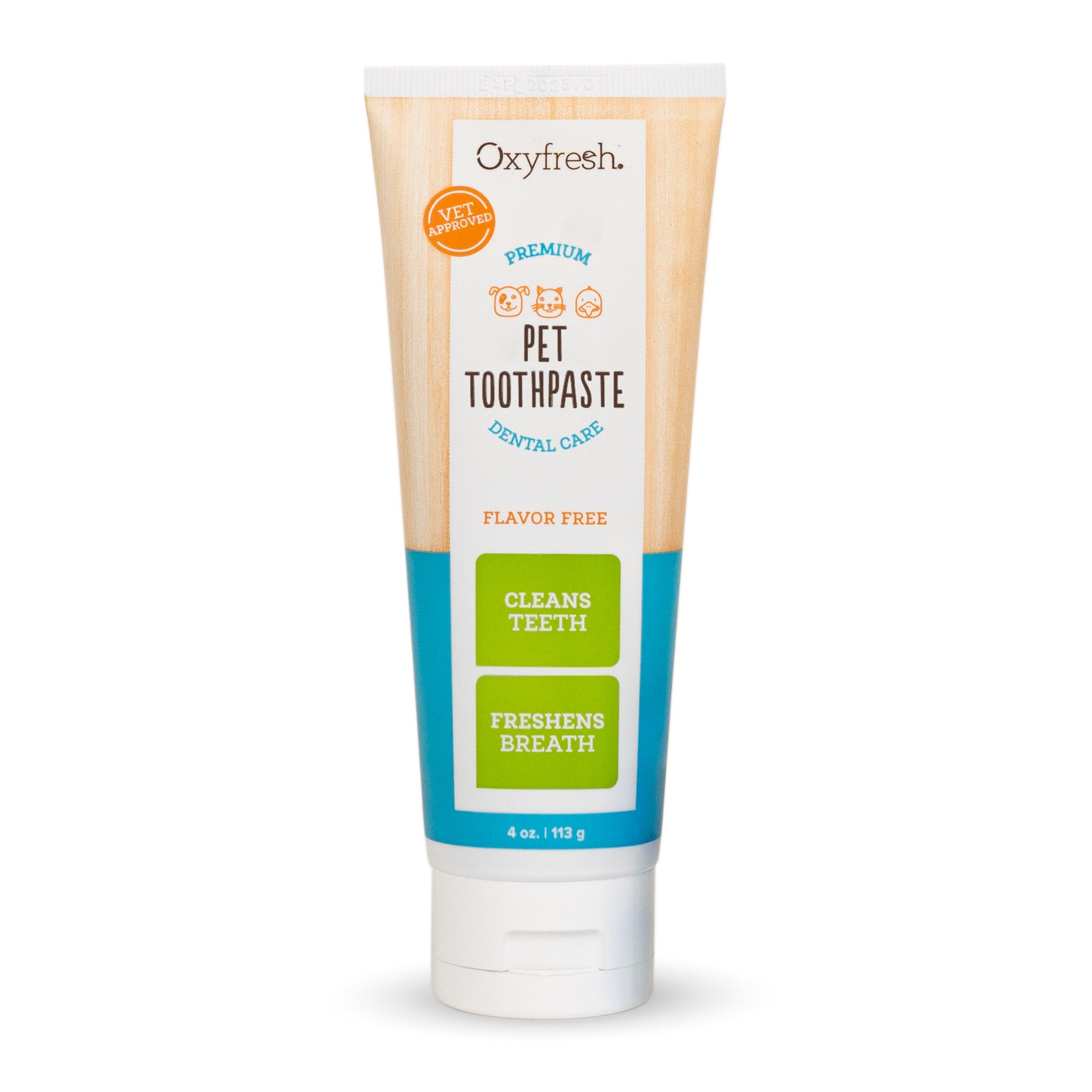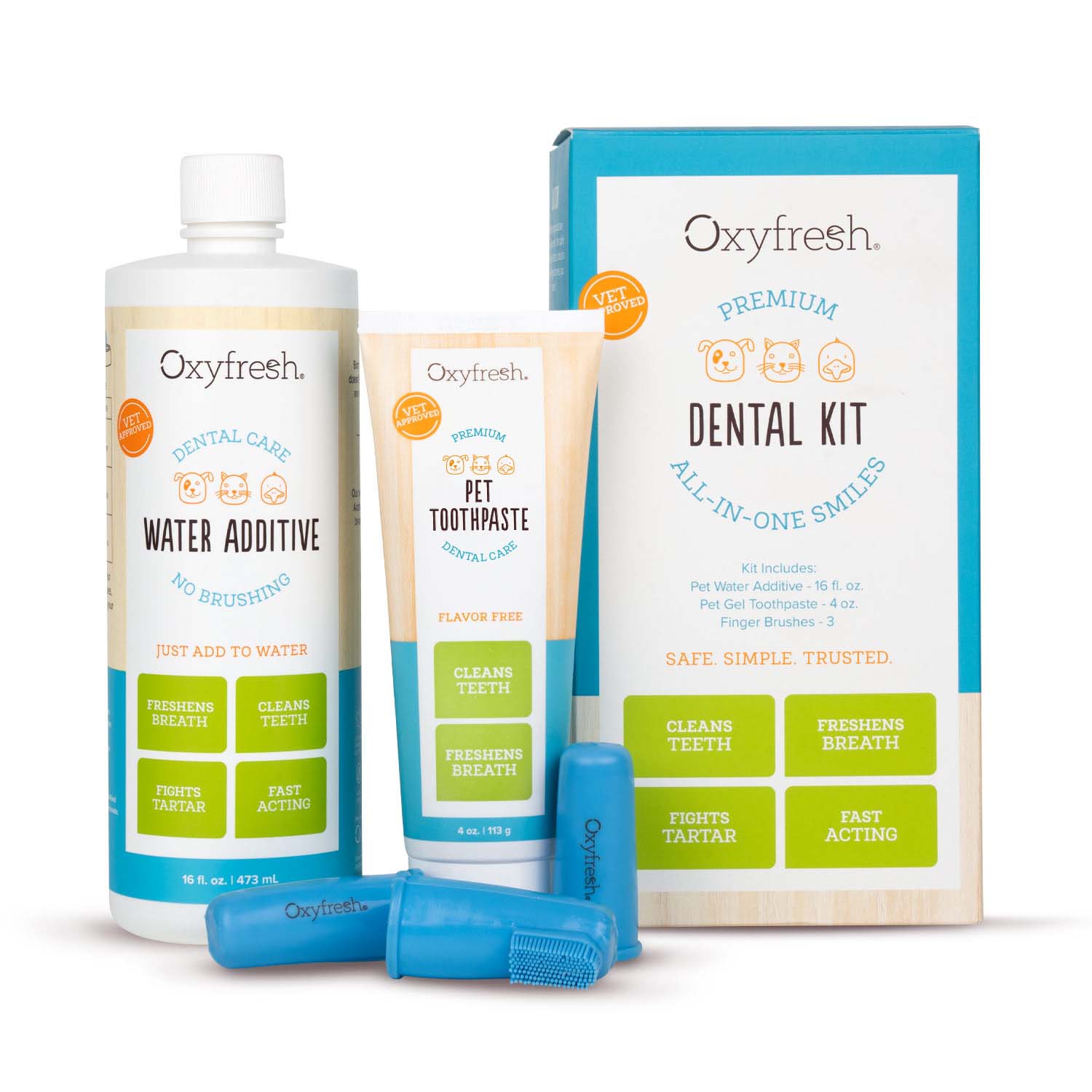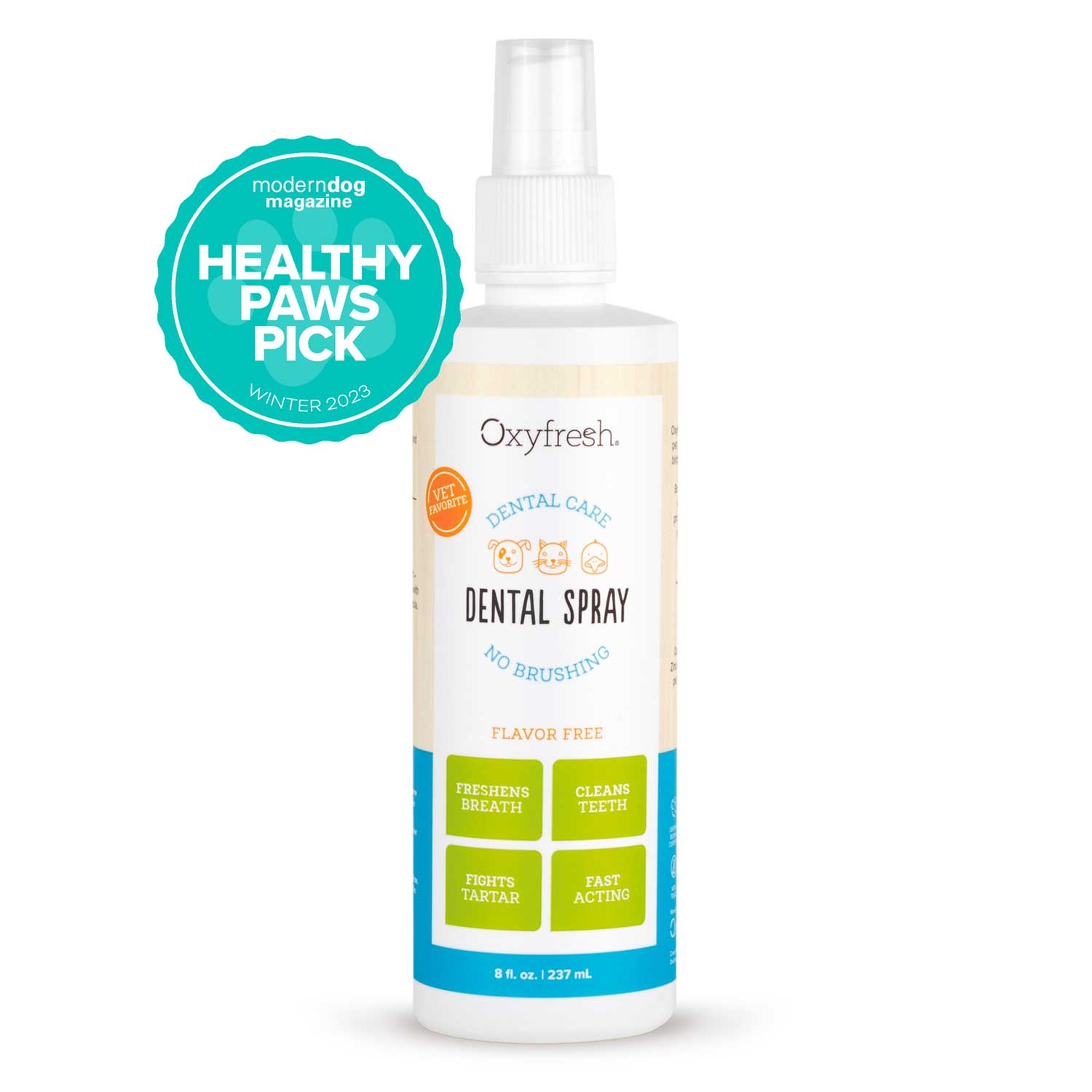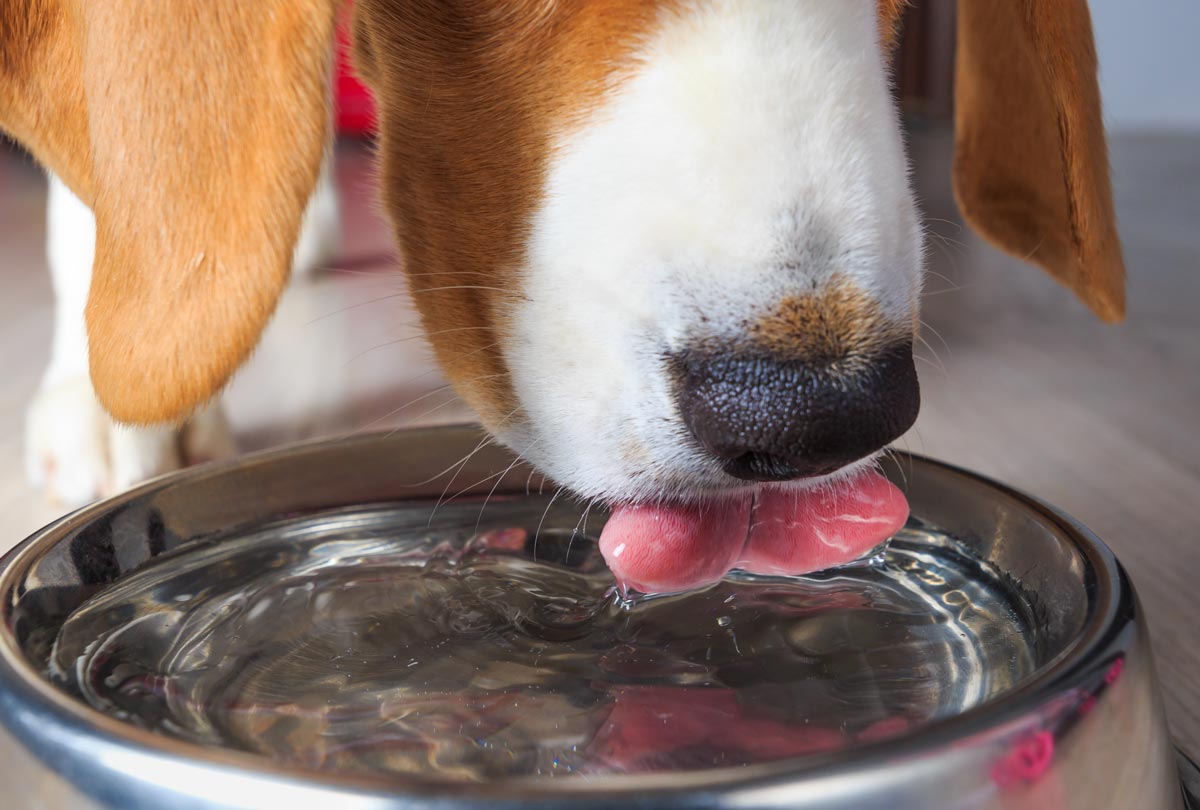During the dog days of summer, too much fun in the sun can lead to your pup getting dehydrated. Dehydration in dogs can cause serious health consequences, so it’s vital to know the warning signs and what to do if you suspect your furry friend is low on H20.
Plus, in honor of National Pet Hydration Awareness Month, we’re dishing out some easy tips to ensure your dog stays hydrated, fresh and happy. Dive in!
What Is Dehydration in Dogs?
There’s nothing like a cold drink of water on a hot summer day – and if your dog had thumbs, they’d raise a toast to that! Beyond the refreshing feeling, water is vital for nearly every function in your dog’s body: regulating body temperature, delivering oxygen to their organs, aiding digestion, lubricating their joints, and more.
Dehydration in dogs happens when they lose more fluid than they're taking in. Water loss throughout the day is normal, occurring through common activities like panting, breathing, going to the bathroom, and evaporation through the paws.
Normally, a dog makes up for this water loss by eating and drinking. But if what they’re consuming doesn’t make up for what they’ve lost, dehydration can occur. And it only takes a 3–5% water loss for a dog to get dehydrated. Severe dehydration in dogs can be life-threatening, causing kidney, liver, or heart failure.
How much water do dogs need each day?
In general, dogs should consume 1 ounce of water (or 1/8 cup) per pound of body weight each day. So if your dog weighs 50 pounds, they’ll need around 50 ounces of water (6.25 cups). If you have an active dog or it’s hot outside, your dog may need up to three times their normal daily amount.
Keep in mind, puppies are more prone to dehydration because of their small body mass. Plus, they’re bundles of energy, and activity naturally causes more water loss. Senior dogs, nursing mothers, and toy dog breeds also have a higher risk of getting dehydrated.
What Causes Dehydration in Dogs?
There are several causes of dehydration in dogs, with these being the most common:
- Heatstroke
- Lack of water intake
- Persistent vomiting or diarrhea
- Item lodged in gastrointestinal tract (rock, toy, etc.)
- Intestinal parasite
- Health conditions like kidney disease, diabetes or cancer
5 Signs of Dehydration in Dogs
1. Lack of Skin Elasticity
This is the easiest sign of dehydration in dogs to test for. Here’s what to do: gently lift a fold of skin near your dog’s shoulder blades/scruff of the neck, then let go. If your dog is well hydrated, the skin will fall back into place almost immediately. But in a dehydrated dog, the skin will look raised for a few seconds before it goes back to normal.
Tip: Test your dog’s skin when you know your pup is adequately hydrated. This will give you a baseline for what’s normal for your dog. This is key if you have a wrinkly breed like a Bulldog, whose skin isn’t as elastic in general.
2. Heavy Panting
Dogs pant to cool themselves down, so this isn’t necessarily a red flag on its own. If the panting is excessive and doesn’t calm down after a few minutes, it can be a sign of dehydration in dogs, especially if accompanied by thick, ropey saliva. Normal saliva, as any connoisseur of dog kisses can tell you, is thin and watery. Saliva that’s thick and clings to their mouth should clue you in that your dog needs water, STAT.
3. Dry, Sticky Dog Gums
If your dog is chill with you touching their mouth, do a gum check to test for dehydration. Hydrated gums will look pink and moist. Dehydrated dog gums will look dry or pale and be sticky to the touch.
You can also test their capillary refill time. Say what now? This is where you press your finger against your dog’s gums. If your dog is properly hydrated, the area where you pressed will look white for a moment, then return to its pink color in under three seconds. With dehydrated dog gums, the capillary refill time will take longer. The longer it takes, the more dehydrated your dog is.
4. Dry Nose or Eyes
Before you panic, a dry nose isn’t always a sign of dehydration in dogs. In fact, there are many reasons dogs have dry noses, from age to exposure to the elements to indoor heating. In addition, dogs with short snouts like Boxers, Pugs and Bulldogs often have dry noses because they have trouble licking their noses. (Nothing a soothing nose balm can’t fix.)
The important thing is to know what’s normal for your dog. If your dog gets a dry nose out of the blue after exercising vigorously in the sun, this is a sign of slight dehydration, especially if combined with other signs of dehydration in dogs.
Likewise, dry eyes can be an indicator of dehydration. What you’ll need to be careful of is sunken-looking eyes. This is a sign of severe dehydration.
5. Lethargy
Dogs who are dehydrated will quickly get lethargic and weak. They may not have the energy to get up and go get water, so if this is the case, you’ll want to bring the water to THEM. If a dog is severely dehydrated, they may not be able to stand up at all and will need an ER vet to give them IV fluids.
Dog Not Drinking Water But Peeing?
Whether your dog is urinating or not is not a reliable way to tell if your dog is hydrated. Dogs who are peeing but not drinking water need an appointment at the vet, as this scenario can be caused by anything from a UTI to bladder stones to kidney failure.
How to Hydrate a Dehydrated Dog
If your dog is slightly dehydrated, give them water in small amounts every few minutes. Too much water all at once could cause them to vomit, leading to further dehydration. Ice cubes or even an electrolyte drink can aid in rehydrating your dog.
Dog won’t drink water? Put some water into a medicine syringe or even a turkey baster and squirt the water into their inner cheek. The cheek route is more effective in getting them to swallow versus squirting the water directly down their throat.
If your dog is showing signs of severe dehydration (sunken-looking eyes, weak pulse, rapid heart rate, or shivering), shock can occur, and you’ll want to get your dog to the emergency vet immediately, where they’ll administer intravenous fluids.
Quick Tips to Prevent Dehydration in Dogs
During National Pet Hydration Awareness Month (and all year long), follow these tips to make sure your dog doesn’t get dehydrated.
- Add water to your dog’s dry kibble.
- Supplement with wet dog food.
- Keep water bowls both indoors and outdoors.
- Wash out your dog’s water bowls daily. If your dog won’t drink enough water, maybe their bowl is too dirty for their taste.
- Don’t exercise your dog when it’s too hot outside.
- For outdoor adventures (weather permitting), bring along a water bottle and portable water bowl. Take frequent breaks so your dog can drink.
- Make sure there’s plenty of shade when your dog is outdoors.
- If you have several pets in the home, set out water bowls in different places. Some dogs appreciate being able to drink in peace.
Tip: If you’re away for long stretches at a time, consider buying an automatic dog water fountain/dispenser. Here are the top water fountains for dogs according to Buyers Guide.
Psst ... Invite Fresh Breath to the Hydration Party
As much as you love your dog, how many times have you complained, "Eww, your breath smells SO bad"?
Well, the easiest way to freshen your pal’s breath (without the drama of tooth brushing) is to add a dental solution into their water bowl each day.
Oxyfresh’s Water Additive is the #1 water additive on the market. Unlike products filled with flavorings like poultry, mint and green tea, which can make dogs not drink their water, Oxyfresh Water Additive is 100% free of flavors and scents so your dog won’t even know it’s in their water bowl!
With every drink, your dog will get essential protection against plaque, bad breath, and periodontal disease, courtesy of Oxygene®, Oxyfresh’s proprietary, non-toxic oxidizer that eliminates harmful bacteria on contact.
If a few seconds a day is all it takes to save your dog from bad breath and dental disease (and save your wallet from expensive teeth cleanings), it makes perfect sense to dive into this fresh new routine.
Hydrated pet + fresh breath = happy pack members.

